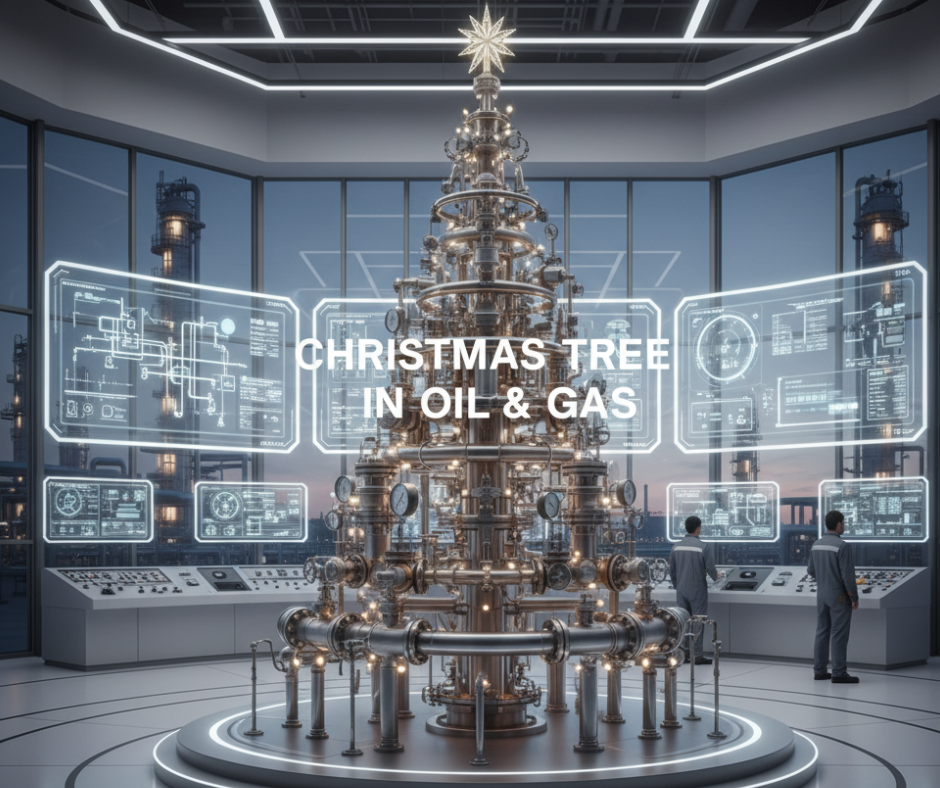When most people hear “Christmas tree,” they think of a beautifully decorated pine tree lit up for the holidays. However, in the oil and gas industry, a “Christmas tree” refers to a vital piece of wellhead equipment essential for controlling and managing the extraction of hydrocarbons from underground reservoirs.
This article provides a comprehensive guide to the Christmas tree in oil and gas, explaining what it is, how it works, its components, types, and importance for both production efficiency and safety.
Defining the Christmas Tree in Oil and Gas
A Christmas tree (often called a “wellhead Christmas tree” or simply “well tree”) is an assembly of valves, pipes, and fittings installed on top of a completed oil or gas well.
-
It controls the flow of oil or gas from the well.
-
It regulates pressure.
-
It provides emergency shutoff capability to prevent blowouts.
-
It allows access for monitoring and maintenance.
The name derives from the assembly’s resemblance to a decorated Christmas tree, with multiple valves and components branching out in several directions from a central vertical pipe.
Key Functions of the Oil and Gas Christmas Tree
1. Flow Control and Regulation
The Christmas tree manages how much oil or gas is produced from the well by opening, closing, or throttling valves.
2. Pressure Control
It helps maintain safe pressure conditions inside the well and connected pipelines.
3. Safety Shutoff
Emergency valves can quickly close to prevent dangerous blowouts or uncontrolled releases of hydrocarbons.
4. Monitoring and Maintenance
Instrumentation on the tree provides pressure readings and enables access for intervention (such as injecting chemicals or fluids).
Main Components of the Christmas Tree
-
Master Valve: Controls flow directly from the reservoir.
-
Wing Valves: Manage flow to production lines at the sides.
-
Swab Valve: For entering wellbore with tools.
-
Choke Valve: Controls flow rate and pressure.
-
Pressure Gauges and Sensors: Monitor well conditions.
-
Chemical Injection Points: Enable prevention of corrosion or hydrate buildup.
Together these facilitate safe and efficient control of well production.
Types of Christmas Trees
Surface Christmas Trees
Installed above ground on land or offshore platforms, they are easiest to access for maintenance.
Subsea Christmas Trees
Installed on the seafloor for offshore deepwater wells, often more complex, requiring remote-operated vehicles (ROVs) for intervention.
Horizontal and Directional Trees
Used for wells drilled non-vertically to better manage flow dynamics.
Dual Completion Trees
Allow simultaneous production from two separate zones within one wellbore.
Importance of Christmas Trees in Oil and Gas Operations
Christmas trees are indispensable because they:
-
Ensure worker and environmental safety by preventing blowouts.
-
Enable precise control over oil and gas extracted to maximize output.
-
Provide pathways for well intervention and chemical treatments.
-
Comply with regulatory safety requirements globally.
Maintenance and Challenges
-
Operating in harsh conditions (high pressures, corrosive environments) demands rigorous testing and maintenance.
-
Subsea trees present unique access challenges requiring specialized equipment.
-
Regular inspection ensures valves operate reliably and prevent leaks or failures.
Read More: Why Water a Christmas Tree? The Essential Care Guide for a Fresh and Safe Holiday Tree
Summary
In the oil and gas industry, a Christmas tree is not a festive decoration but a critical wellhead control system comprising valves and instrumentation. Its roles include flow regulation, pressure control, safety shutdowns, and enabling well maintenance. Properly functioning Christmas trees are essential to secure, efficient, and productive hydrocarbon extraction.



Add a Comment